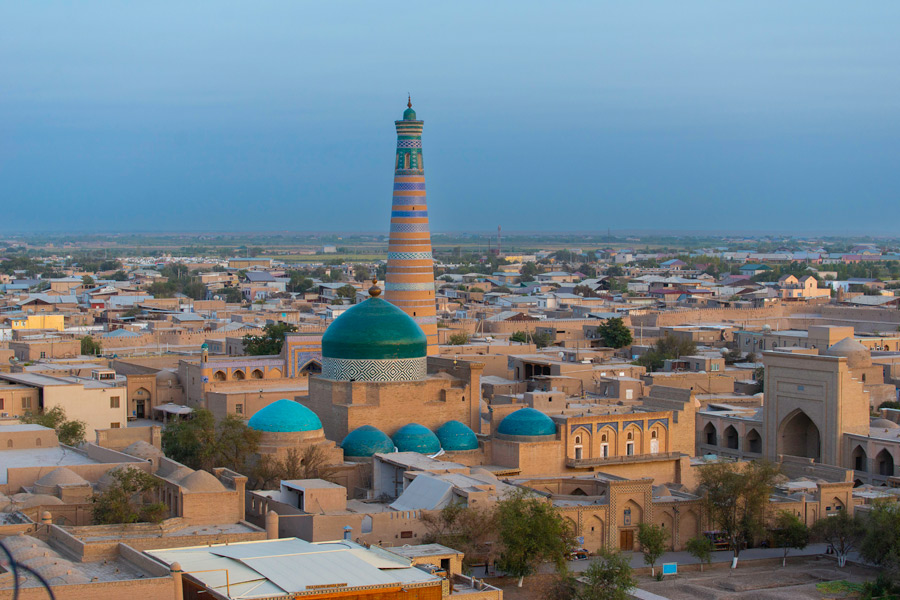
The city of Khiva is Uzbekistan’s desert gem, a dream destination for travelers with an adventurous spirit and a passion for historical architecture. Nearly all the places to visit in Khiva, many of which rank among the most important Uzbekistan attractions, are concentrated within the walled Itchan Kala (Inner City) - a large historic quarter that became the country’s first UNESCO World Heritage Site in the early 1990s. Step through one of the four fortified gates of Itchan Kala and you’ll enter a world of majestic palaces, ornate madrasahs, and towering minarets that evoke the grandeur of a once-mighty empire. Remarkably, this ancient district remains home to several hundred families, who help preserve the spirit of Old Khiva to this day.
You’ve already traveled far to reach this fabled destination, so while you're here, don’t miss out on these unforgettable Khiva experiences - the top 13 things to do in Khiva.
Kalta Minor Minaret
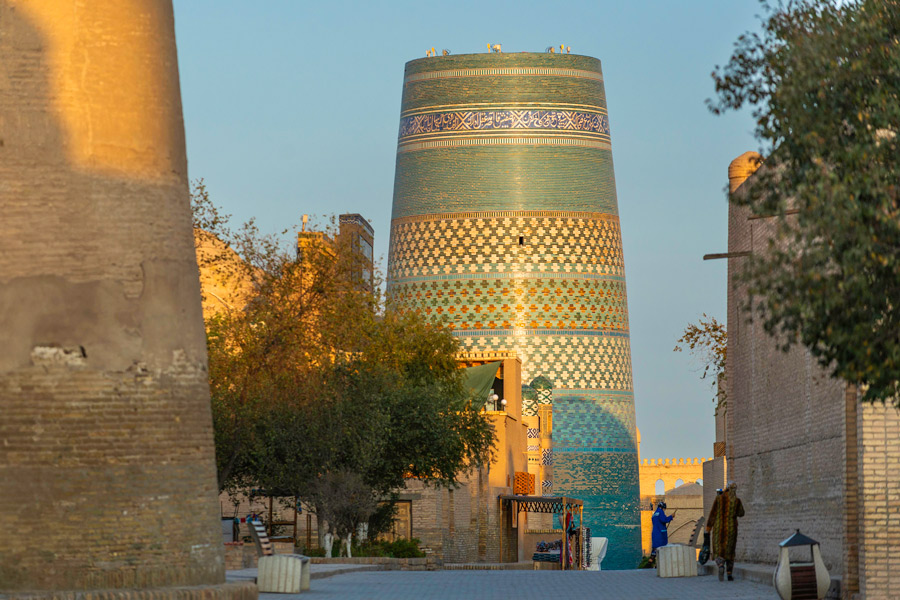
Among the most photogenic places to visit in Khiva, the Kalta Minor Minaret captivates with its bold silhouette and vivid azure tiles. This iconic site not only dominates the skyline of Itchan Kala but also reflects a vibrant past: built in the 19th century, Kalta Minor (meaning “Short Tower”) was originally designed to reach 70 meters. However, construction halted abruptly after the ruling khan’s sudden death, leaving behind the distinctive 26-meter-tall structure visible today. Although visitors cannot enter the minaret, seeing it up close remains a standout thing to do in Khiva, especially as it is the only minaret in Central Asia entirely adorned with tiles.
Muhammad Amin-khan Madrasah
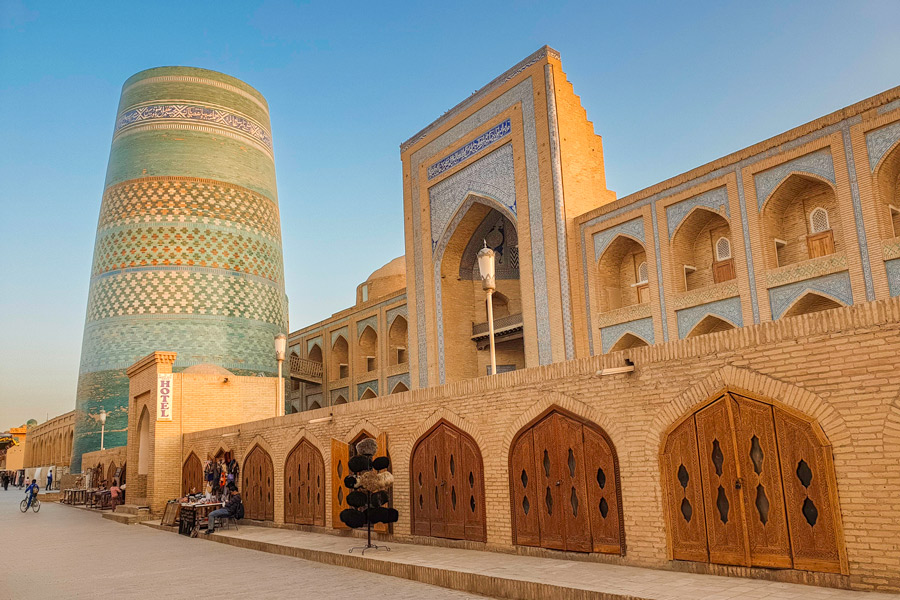
Just beside Kalta Minor Minaret stands a landmark that did fulfill its grand ambitions - Muhammad Amin-khan Madrasah, the largest historic religious school in all of Central Asia. Also built in the mid-19th century, this educational institution once held high prestige across the region, with 125 rooms housing up to 260 students. Fans of Timurid architecture will find visiting Muhammad Amin-khan Madrasah a richly rewarding Khiva experience, with its carved wooden pillars, glazed tiles, five domes, and rare second-floor balconies that were cutting-edge at the time. Although the former madrasah now functions as a hotel, strolling through its courtyards offers a vivid sense of its former majesty and ranks high on the list of memorable Khiva sightseeing moments for anyone wondering what to do in Khiva.
Islam Khodja Minaret
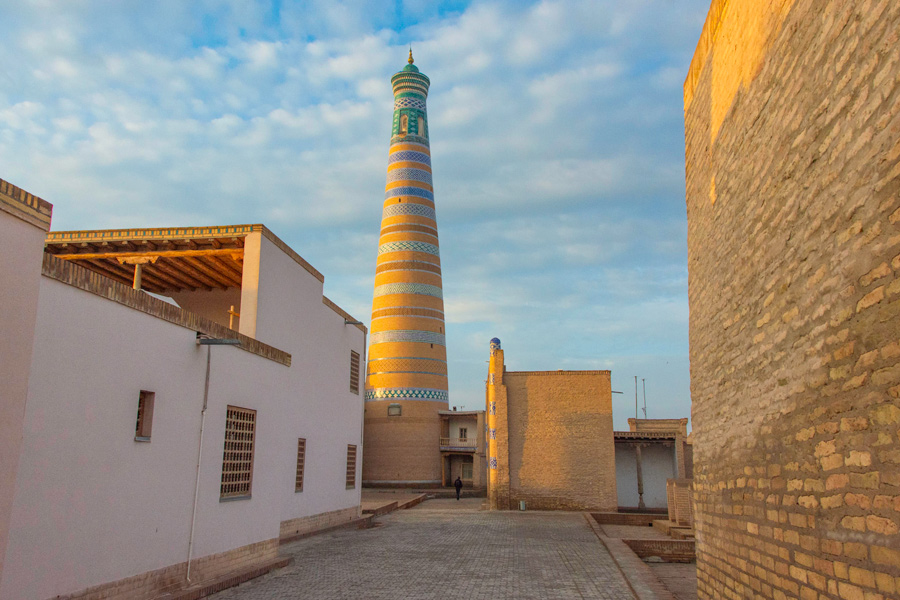
Soaring above the skyline as the tallest minaret in Uzbekistan, Islam Khodja Minaret stands as a postcard-perfect symbol of Khiva’s Itchan Kala. The tower reaches nearly 57 meters, with a lookout platform positioned 45 meters up, offering panoramic views of the city. Although constructed in the early 1900s, its design closely mirrors the architectural style of the early Middle Ages, blending seamlessly with the surrounding old city. The tower’s banded mosaic tiles, elegant form, and adjoining mosque make it one of the most striking places to visit in Khiva. For those seeking active Khiva experiences, the steep, winding staircase to the viewing platform adds a touch of adventure and ranks among the top things to do in Khiva.
Juma Mosque

Khiva’s most famous mosque surprises with its highly unusual layout and architecture. Constructed in the early Middle Ages but rebuilt in the late 18th century, the modest, one-room mosque has openings on all four sides and is supported by over 200 wooden pillars that fill the prayer hall. The intricately carved rafters are from different time periods, with a handful even dating to the 10th–11th centuries when the mosque was originally built. Visitors are regularly impressed with the craftsmanship on display at Juma Mosque and the quiet solemnity that pervades the site. Dim and entirely unadorned save the playful shafts of light streaming in, the mosque offers a contemplative atmosphere that subtly answers the question of what to do in Khiva for travelers drawn to simplicity and soul.
The Walls of Itchan Kala
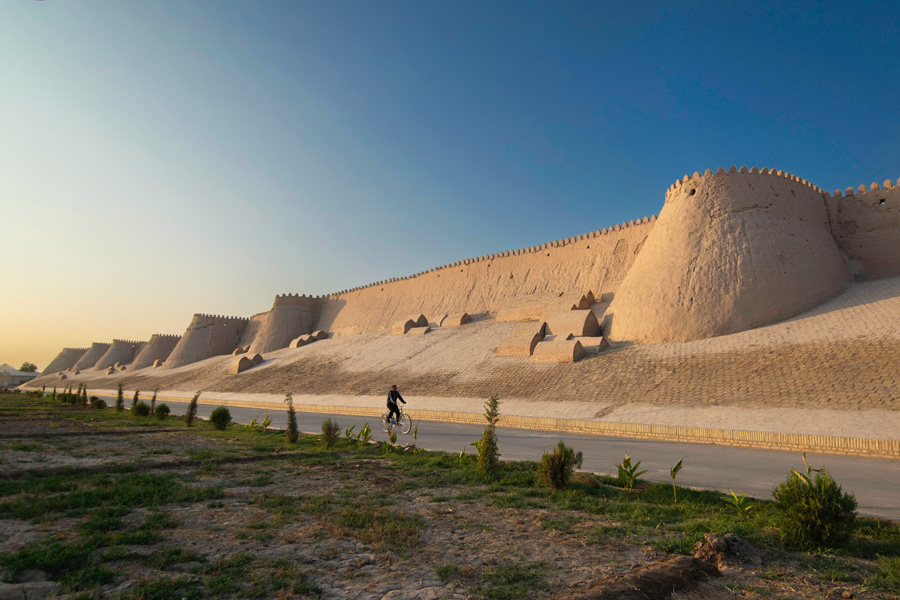
No visit to ancient Khiva would be complete without climbing its legendary walls, which stretch for more than 2 kilometers to encircle the Old City. Complete with towers, ramparts, and four fortified gates, this impressive clay brick structure averages 5–6 meters in thickness and reaches 10 meters in height. The 17th–18th century wall that once kept invaders at bay now serves as a striking divider between historic and modern Khiva. Although the wall is not scalable along most sections, head to the North Gate for the most accessible point. Once on top, you can walk a fair distance in both directions and survey the land like the sentries of old. For a truly memorable start to your day, wake up early to watch the sun rise from atop the walls and admire this dreamlike city in all its splendor - a moment often counted as one of the best things to do in Khiva.
Tash-Hauli Palace
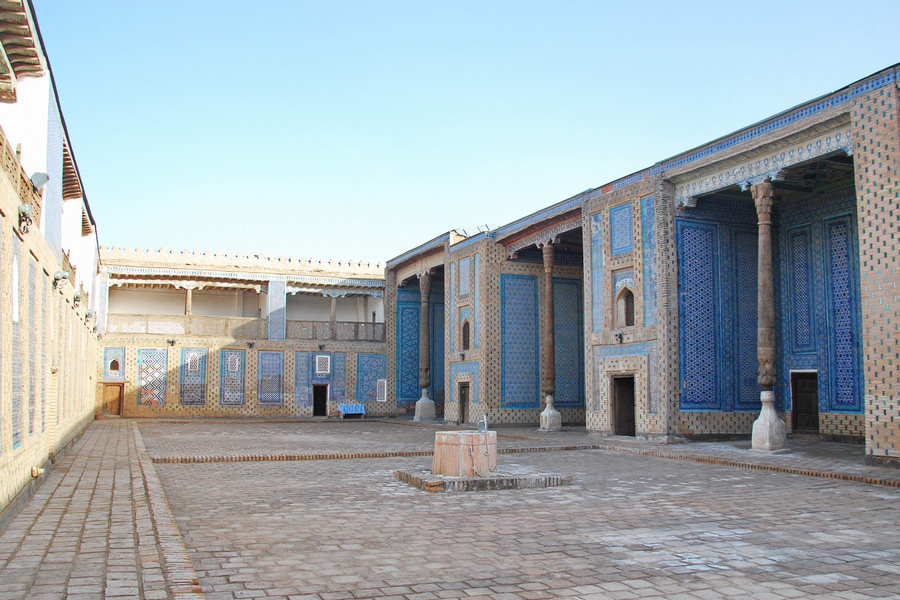
Complete with a secret corridor, a harem, a large yurt and a maze of passageways, Tash-Hauli Palace (Stone Courtyard Palace) is as exotic as they come. This royal residence, built in the 1830s as the living quarters for Khiva ruler Allah Kuli Khan, was the site of more than one historical meeting between European envoys and feared local rulers. Its architecture reflects that of the average Khorezmian home of that time, although on a much grander scale. Now considered the gem of 19th-century Khiva architecture, it amazes with colorful murals, fine latticework, chiseled pillars and stunning courtyards plastered with tiles in every shade of blue. Take time to wander each of the three sections of Tash-Hauli Palace, where Khiva’s intriguing past is sure to become nearly palpable to the imaginative traveler - a highlight among Khiva experiences for those drawn to architectural storytelling.
Mahmud Pahlavan Mausoleum
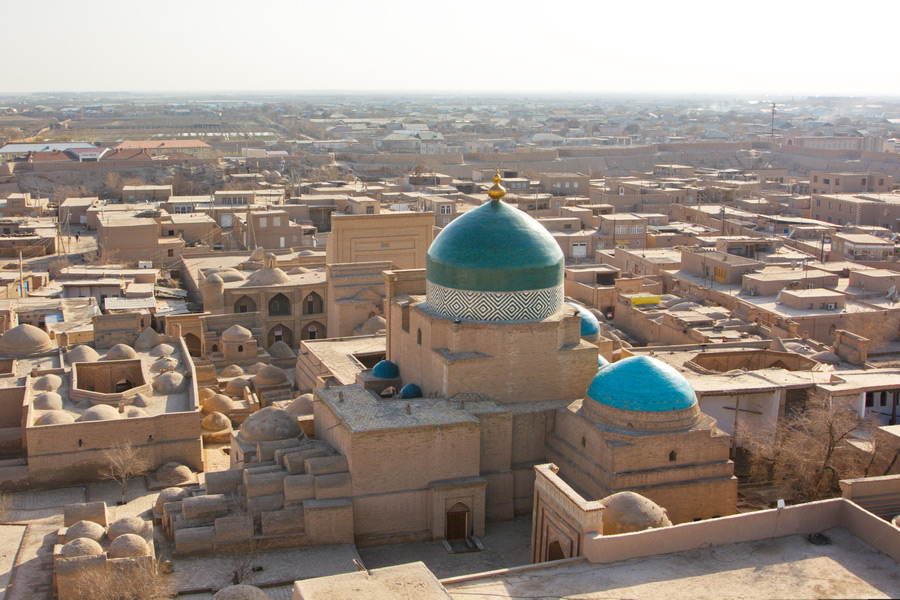
In 13th–14th century Khiva lived a man of vast and extraordinary talents. Mahmud Pahlavan was a poet and scholar who was best known for his amazing strength and heart of compassion toward the oppressed, including the many slaves who were imprisoned in Khiva in his time. What began as a simple memorial built after the hero’s death was expanded in the early 18th century to include a small mosque, madrasah, and burial grounds for several local rulers, all of which can still be seen today. Mahmud Pahlavan Mausoleum is now a holy site for Muslims, best noted for its exemplary architecture and shimmering turquoise dome - the largest in all of Khiva. Step into any of the burial halls and you’ll be surrounded by blue and turquoise mosaic tiles of breathtaking detail, making this sacred site a standout historic place to visit in Khiva.
The Watchtower of Kunya-Ark Citadel
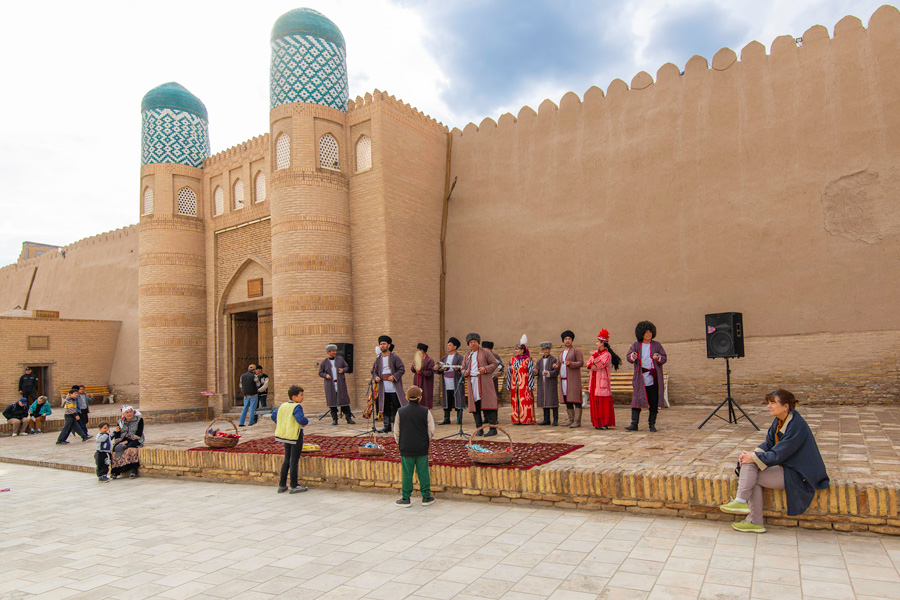
Commonly referred to as a “city within a city”, Kunya-Ark Citadel is one of the most expansive sites of Khiva’s Itchan Kala. The fortress was first constructed in the 12th century, although the architecture seen today is primarily from the early 19th century. It once served as the living quarters of the ruling khan, and while some of the buildings have since been lost, the existing sites will not disappoint. A dungeon, harem, courtyard, and colorful summer mosque paint a vivid picture of the city’s complicated past, while a stunning throne room with tiled gardens splashed across its walls is nothing short of breathtaking. The famous Kunya-Ark watchtower stands adjacent to Khiva’s city wall and is well worth a climb - an experience often considered one of the most rewarding things to do in Khiva. While the views are gorgeous at sunset, you can also climb the turret during the morning and mid-day hours for a less crowded experience.
Khiva Silk Carpet Workshop
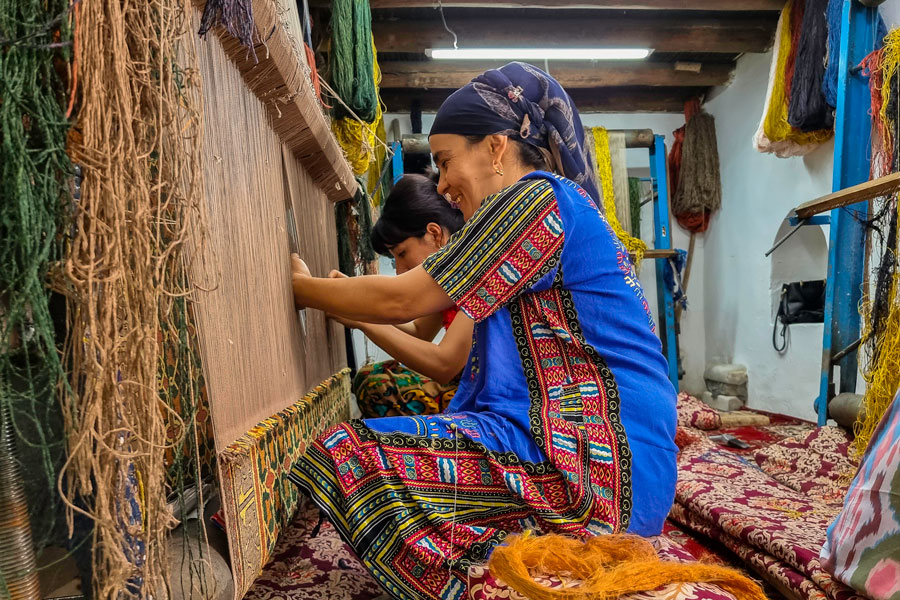
When you start to feel overwhelmed by historical facts and endless architecture, take a breather at Khiva Silk Carpet Workshop, a UNESCO-backed initiative that preserves and promotes local culture while providing employment to local women. Watch weavers busy at work as a local guide explains the carpet-weaving process from beginning to end. Through the use of natural products and traditional weaving methods, fine-quality rugs and wall hangings are produced and placed for sale on site. Compare Khiva carpets with those of Samarkand or Bukhara, and you’ll quickly notice the distinct floral prints that appear only on Khiva rugs, echoing the floral tile motifs of Itchan Kala. Offering a creative counterpoint to the city’s static monuments, the carpet workshop adds a living, modern layer to the historic quarter - and a meaningful addition to hands-on Khiva experiences.
Allakuli Khan Madrasah
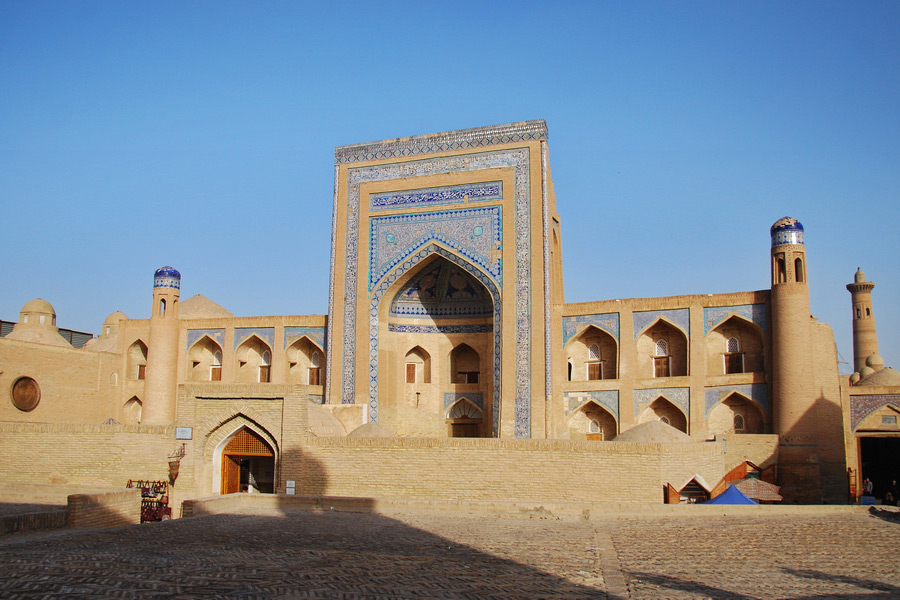
One of the largest religious schools in Khiva, Allakuli Khan Madrasah was built in the mid-19th century and is now regarded as one of the finest examples of late medieval architecture in the city. Its bold blue-and-white majolica blends seamlessly with the madrasah’s finely executed form - a perfect mix of beauty and balance that impresses with both size and solemnity. With two floors, 99 rooms, and plenty of arches and columns, Allakuli Khan Madrasah embodies the essence of traditional Khiva architecture. Today, this graceful madrasah, now home to a small medical museum, offers a quiet moment of discovery that lingers long after your time in Khiva.
Our journey through Khiva wouldn't feel complete without mentioning a few more essential stops in Khiva that add even more color and character to your visit:
Ak Mosque
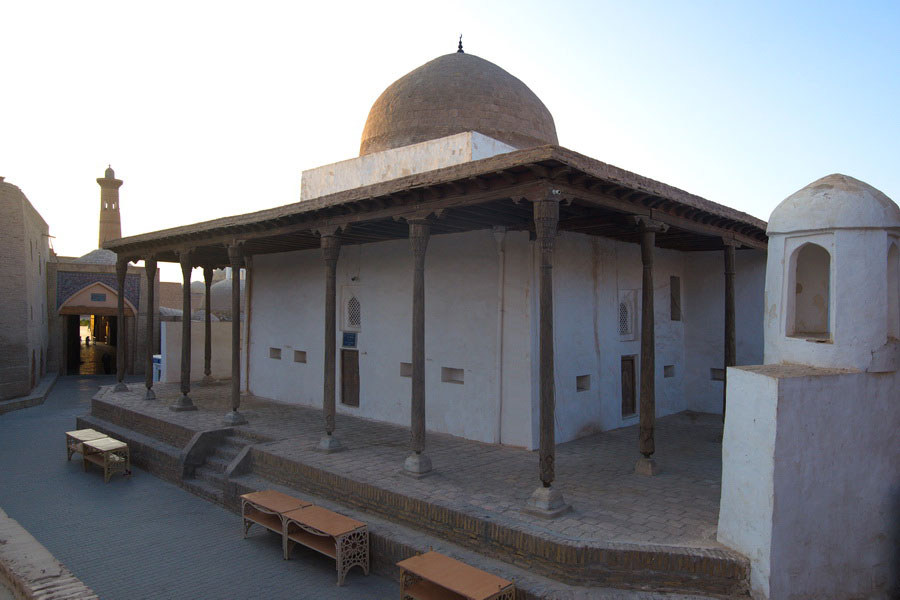
This small prayer house draws the eye with its distinctive, multi-generational architecture. True to its name - Ak Mosque means White Mosque - its plastered white walls and dome radiate an enduring simplicity that stands apart from the city’s more ornate structures.
Khiva Puppet Theater
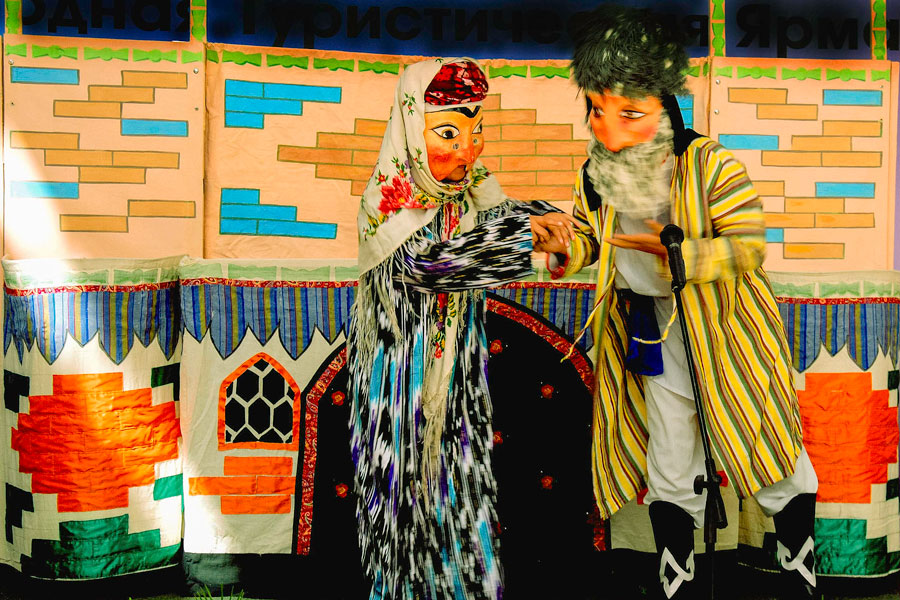
Performed by a professional troupe, these lighthearted spectacles blend humor, history, and cultural insight - a refreshing way to experience Khiva beyond its landmarks, especially after a full day of walking the old city.
Isfandiyar Palace
This early 20th-century residence reflects the lavish tastes of Khiva’s elite and offers a vivid look at how local culture evolved in step with changing eras. Located outside Itchan Kala and often missed by crowds, it’s a place where Khiva’s quieter layers reveal themselves - a welcome contrast to the city’s grander monuments.

